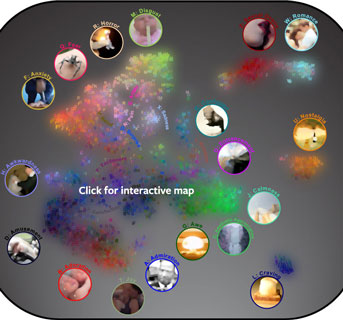The Emoji Movie,” in which the protagonist can’t help but express a wide variety of emotions instead of the one assigned to him, may have gotten something right. A new UC Berkeley study challenges a long-held assumption in psychology that most human emotions fall within the universal categories of happiness, sadness, anger, surprise, fear and disgust.

Credit: Courtesy Alan Cowen
Using novel statistical models to analyze the responses of more than 800 men and women to over 2,000 emotionally evocative video clips, UC Berkeley researchers identified 27 distinct categories of emotion and created a multidimensional, interactive map to show how they’re connected.
Their findings are published this week in the early edition of the Proceedings of the National Academy of Sciences journal.
“We found that 27 distinct dimensions, not six, were necessary to account for the way hundreds of people reliably reported feeling in response to each video,” said study senior author Dacher Keltner, a UC Berkeley psychology professor and expert on the science of emotions.
Moreover, in contrast to the notion that […]











The big story here is a program called Emotient, which can read your emotions by looking at you through your smart phone or lap top camera during a call.